Did you know that tomato plants are one of the most popular edible garden crops in the United States? In fact, over 90% of home gardeners grow tomatoes in their backyard or patio containers. This beloved fruit, packed with flavor and nutrients, is a staple in countless salads, sauces, and summer dishes. Whether you’re an experienced gardener or a first-time tomato planter, this comprehensive guide will provide you with all the information you need to plant and care for tomato plants successfully.
Key Takeaways:
- Choose disease-resistant tomato varieties suitable for your garden.
- Provide at least 6 to 8 hours of direct sunlight daily for optimal growth.
- Give each tomato plant enough space to grow and support them with stakes, trellises, or cages.
- Prepare the planting area with nutrient-rich soil and compost.
- Maintain regular watering, monitor for pests and diseases, and feed the plants with a balanced fertilizer.
Preparing the Planting Area
Before planting tomato plants, it is essential to prepare the planting area properly. Follow these best practices for optimal results and healthy tomato plants.
Soil Preparation:
Start by mixing aged compost or high-quality garden soil into the planting area. This will provide essential nutrients for the tomato plants and improve soil moisture retention. Ensure that the soil has a pH level between 6.2 to 6.8, as this range allows for optimal nutrient uptake by the plants.
Burying the Stem:
When planting your tomato seedlings, bury two-thirds of the stem underground. This technique encourages the plant to sprout roots along the buried stem, resulting in stronger and more drought-resistant plants. Ensure that only the top one-third of the plant remains above the soil surface.
Watering Seedlings:
Immediately after planting, water the seedlings thoroughly to help them settle in their new environment. This initial watering provides the much-needed moisture for the plants to establish their roots and begin their growth journey.
Properly preparing the planting area sets the foundation for healthy and thriving tomato plants. By following these best practices, you can optimize the nutrient availability and moisture retention in the soil, ensuring the success of your tomato garden.
Tomato Plant Nutrition
Feeding tomato plants with the right nutrients is essential for their healthy growth and abundant fruit production. Tomatoes require a constant supply of major and minor plant nutrients to thrive. To ensure the optimal growth of your tomato plants, it is important to provide them with the necessary nutrients throughout their lifecycle.
When planting tomato plants, it is beneficial to mix a balanced fertilizer with calcium into the soil. This helps prevent blossom end rot, a common problem caused by calcium deficiency. Incorporate a continuous-release fertilizer containing a balanced blend of macronutrients like nitrogen, phosphorus, and potassium, along with essential micronutrients.
Furthermore, adding compost to the soil enhances its nutrient content and improves moisture retention. Mix in 3 to 4 inches of compost, which not only enriches the soil but also provides additional minor nutrients necessary for healthy plant growth. Compost also aids in retaining moisture, reducing the risk of drought stress.
Throughout the growing season, continue feeding your tomato plants with a balanced fertilizer. This ensures a steady supply of nutrients, enabling the plants to develop strong roots, lush foliage, and bountiful fruit.
The Importance of Tomato Plant Nutrients
Tomatoes are heavy feeders, meaning they have high nutrient requirements to support their vigorous growth and fruit production. Understanding the role of different nutrients can help you provide the optimal conditions for your tomato plants.
| Nutrient | Role |
|---|---|
| Nitrogen | Essential for leaf and stem growth, as well as overall plant health. |
| Phosphorus | Promotes root development, flowering, and fruit formation. |
| Potassium | Enhances fruit quality, improves disease resistance, and strengthens overall plant structure. |
| Calcium | Prevents blossom end rot and contributes to healthy cell formation. |
| Magnesium | Aids in chlorophyll production and supports overall plant energy. |
| Sulfur | Important for the synthesis of amino acids and proteins. |
By providing your tomato plants with the necessary nutrients, you can ensure their successful growth and abundant harvest. Remember to follow the recommended application rates and schedules specified on the fertilizer packaging to avoid overfertilization, which can lead to nutrient imbalances or plant burn.
Tomato Plant Maintenance
Keeping your tomato plants healthy and thriving requires regular maintenance and care. By following these essential tips, you can ensure optimal growth and productivity for your tomatoes.
Regularly Check for Pests and Diseases
One of the most crucial aspects of tomato plant maintenance is monitoring for pests and diseases. Inspect your plants regularly, paying close attention to leaves, stems, and fruits. Remove any unhealthy or diseased leaves immediately to prevent the spread of fungal diseases like early blight and late blight. This proactive measure will help keep your plants healthy and disease-free.
Deal with Pests Promptly
Pests, such as tomato hornworms, can wreak havoc on your tomato plants if left unaddressed. When you spot these pests, remove them by hand or use organic pest control methods to prevent them from causing extensive damage. Acting quickly will help protect your plants and maintain their productivity.
Prune Withered Leaves and Branches
As the summer progresses, it’s essential to prune away withered leaves and branches from your tomato plants. By doing so, you promote better air circulation, prevent the spread of diseases, and extend the overall life of your plants. Use clean, sharp pruning shears to make clean cuts and avoid damaging the healthy parts of the plant.
Provide Support for Tomato Plants
Supporting tomato plants is crucial for healthy growth and fruit production. Use stakes, trellises, or cages to provide adequate support and prevent them from sprawling on the ground. Proper support helps improve air circulation, reduces the risk of diseases, and makes it easier to harvest the ripe fruits. It is recommended to install the supports when planting the tomatoes to avoid disturbing the roots later on.
Supply Liquid Plant Food When Needed
In addition to regular watering, tomato plants may benefit from extra nutrients in the form of liquid plant food. If you notice any signs of nutrient deficiencies or slow growth, consider supplementing with a balanced, water-soluble fertilizer specifically formulated for tomatoes. Follow the manufacturer’s instructions for application rates and timing to avoid overfeeding.
Quote:
“Regular maintenance is key to keeping tomato plants healthy and productive. By checking for pests and diseases, pruning, and providing appropriate support, you can ensure successful tomato growth throughout the season.” – Gardening Expert
In summary, caring for tomato plants through regular maintenance is crucial for their overall health and productivity. By regularly checking for pests and diseases, dealing with them promptly, pruning withered leaves and branches, providing proper support, and supplying necessary nutrients, you can enjoy a bountiful harvest of delicious tomatoes.
Troubleshooting Tomato Problems
Tomato plants can face various problems such as fruit not setting, blossom end rot, and fungal diseases like early blight and late blight. To ensure healthy tomato plants and a bountiful harvest, it is important to address these common tomato plant issues.
Fruiting Issues
If your tomato plants are not setting fruit, it could be due to several factors. One common cause is heat stress. To prevent fruiting issues, choose heat-tolerant tomato varieties such as ‘Heatwave II’ or ‘Solar Fire’ and ensure they receive consistent soil moisture. Water regularly to maintain even soil moisture levels, avoiding fluctuations that can lead to blossom end rot.
Blossom End Rot
Blossom end rot is a common problem in tomatoes characterized by dark, sunken spots on the bottom of the fruit. It is caused by calcium deficiency or calcium uptake issues in the plant. To prevent blossom end rot, provide adequate calcium by incorporating eggshells or calcium-rich fertilizers into the soil before planting. Additionally, maintain even soil moisture levels and avoid excessive fluctuations.
Fungal Diseases
Tomato plants are susceptible to fungal diseases like early blight and late blight. These diseases can cause leaf spots, wilting, and fruit rot. To control fungal diseases, remove unhealthy leaves and branches as soon as they are noticed. This helps prevent the spread of the disease to healthy parts of the plant. Additionally, consider using approved fungicides and follow the instructions carefully.
Pest Control
Pests such as aphids, tomato hornworms, and flea beetles can cause significant damage to tomato plants. Monitor your plants regularly and deal with pests promptly. You can handpick larger pests like tomato hornworms or use organic insecticides for smaller pests like aphids and flea beetles. Maintaining a clean garden, removing debris, and practicing crop rotation can also help reduce pest populations.
To summarize, tomato plant problems are common but can be managed with proper care and attention. By choosing heat-tolerant varieties, maintaining consistent soil moisture, controlling fungal diseases, and monitoring for pests, you can ensure healthy tomato plants and a successful harvest.
Harvesting and Storing Tomatoes
When it comes to harvesting tomatoes, timing is everything. It’s crucial to wait until the tomatoes are fully ripe for the best flavor and texture. Depending on the variety, the signs of ripeness may vary, but generally, ripe tomatoes should have a deep color and feel firm when gently squeezed.
Once you’ve picked your ripe tomatoes, it’s important to store them properly to maintain their freshness and flavor. Avoid refrigeration, as it can negatively affect the taste. Instead, store the tomatoes at room temperature indoors or in a shady spot outside. This will help preserve their natural flavor and aroma.
If you find yourself with a surplus of tomatoes, there are several methods you can use to prolong their shelf life and enjoy their deliciousness later on. Freezing, canning, and drying are popular options for long-term storage. Each method has its own unique benefits and can be chosen based on your preferences and intended use.
“Freezing tomatoes is a convenient way to preserve their freshness. Simply blanch, peel, and freeze the tomatoes whole or in desired portions. They can be used in soups, sauces, or stews later on, adding a burst of flavor to your dishes.”
“Canning tomatoes allows you to enjoy them throughout the year. Use a pressure canner or water bath canner to safely preserve the tomatoes in jars. Canned tomatoes are perfect for making sauces, salsas, or even ketchup.”
“Drying tomatoes concentrates their flavors, resulting in a sweet and intense taste. Slice the tomatoes and dry them either in a dehydrator or the oven at a low temperature. Once dried, they can be stored in airtight containers and used in salads, pastas, or as a flavorful snack.”
Storing Tomatoes
Here are some additional tips for storing tomatoes:
- Keep tomatoes at room temperature away from direct sunlight to prevent overripening.
- Avoid storing tomatoes near other fruits, as they can speed up the ripening process.
- Check your tomatoes regularly and remove any that show signs of spoilage to prevent the spread of rot.
Now that you know how to harvest and store tomatoes, you can enjoy the flavors of your homegrown tomatoes throughout the year!
Growing Tomatoes from Planting to Harvest
Tomatoes are a delightful addition to any garden, and with the right guidance, you can enjoy a bountiful harvest of these delicious fruits. In this section, I will provide you with a comprehensive tomato growing guide that covers everything from planting to harvesting.
Tomatoes are tender, warm-season crops that thrive in sunny environments and cannot tolerate frost. To ensure optimal growth, it’s essential to plant them outdoors in late spring or early summer, except for zone 10 where they can be cultivated as a fall and winter crop. The choice of planting dates will largely depend on your specific region and climate.
The time it takes for tomatoes to mature and be ready for harvest can range from 60 to 100+ days, depending on the variety you choose. Most gardeners opt for starting tomato plants from transplants purchased at a nursery, as this provides a head start and ensures a higher success rate. However, if you prefer a more hands-on approach, tomatoes can also be grown from seeds indoors.
When transplanting your tomato seedlings, be sure to place tomato stakes or cages in the soil at planting. This will provide the necessary support for the plants as they grow taller and produce heavy fruit. Proper support is crucial for maintaining the plant’s health and preventing damage.
Now that we’ve covered the basics of growing tomatoes from planting to harvest let’s move on to the next section, where we will delve deeper into understanding different tomato varieties.
Understanding Tomato Varieties
When it comes to tomato gardening, there is a wide variety of choices available. Understanding the different tomato varieties is essential for selecting the right ones for your garden. Let’s explore two popular types: determinate and indeterminate tomatoes.
Determinate Tomatoes
Determinate tomatoes are known for their compact and bushy growth habit. These plants have a predetermined size and stop growing once they reach a certain height. They tend to be shorter and more manageable, making them suitable for container gardening and small spaces.
One advantage of determinate tomatoes is that they typically mature and produce fruit all at once, usually within a short period. This can be beneficial if you plan to preserve or process your tomatoes in large batches.
Indeterminate Tomatoes
In contrast, indeterminate tomatoes have a vining growth habit and continue to grow and produce fruit throughout the entire growing season. These plants require more room and support, such as staking or caging, to ensure their sprawling vines don’t overwhelm your garden space.
Indeterminate tomatoes tend to be larger in size and can keep producing fruit until the first frost hits. This makes them a favorite among gardeners who enjoy a prolonged harvest season and a continuous supply of fresh tomatoes.
When choosing tomato varieties, consider your gardening space and preferences. If you have limited space or want an abundant harvest all at once, determinate tomatoes are a great choice. On the other hand, if you have ample room and prefer a longer harvest season, indeterminate tomatoes are the way to go.
| Tomato Varieties | Type |
|---|---|
| Roma | Determinate |
| Early Girl | Indeterminate |
| Beefsteak | Indeterminate |
| Cherry | Indeterminate |
Remember to explore the diverse array of tomato varieties available, as each offers its own unique characteristics, flavors, and culinary uses. Happy tomato gardening!
Growing Tomatoes in Containers
Tomatoes can be successfully grown in containers, making them a great option for those with limited gardening space. Container gardening tomatoes allows you to enjoy the taste of fresh, homegrown tomatoes even if you don’t have a backyard or a traditional garden.
When growing tomatoes in containers, there are a few key factors to consider. Firstly, choose a large pot or container with drainage holes to ensure proper water drainage. This will prevent waterlogged soil, which can lead to root rot and other issues. Use well-draining soil specifically formulated for container gardening.
Next, find a sunny location for your tomato container. Tomatoes thrive in full sun, so choose a spot that gets at least 6 hours of direct sunlight per day. Placing your container in a sunny location will help your tomato plants produce abundant, flavorful fruits.
When it comes to selecting tomato varieties for container gardening, opt for determinate or dwarf varieties. These types of tomatoes are compact and bushy, making them well-suited for growing in containers. Some popular choices include ‘Tiny Tim,’ ‘Patio Princess,’ and ‘Tom Thumb.’
Regular watering is crucial when growing tomatoes in containers. Containers tend to dry out faster than garden beds, so you’ll need to water your tomato plants regularly to keep the soil consistently moist. Avoid overwatering, as this can lead to root rot. Always check the moisture level of the soil before watering.
Container-grown tomatoes may require more frequent fertilization compared to those grown in the ground. Provide a balanced tomato fertilizer according to the manufacturer’s instructions to ensure your container-grown tomatoes receive the necessary nutrients for healthy growth and abundant fruit production.
Benefits of Growing Tomatoes in Containers:
- Perfect for small spaces: Container gardening tomatoes allow you to grow tomatoes on balconies, patios, or small yards, making it ideal for urban dwellers or individuals with limited gardening space.
- Improved control over soil quality: When growing in containers, you have complete control over the soil composition and quality. This allows you to create the optimal growing environment for your tomato plants.
- Easy maintenance: Container gardening can be less labor-intensive compared to traditional garden beds. It requires less weeding and provides better access to the plants for pruning, harvesting, and maintenance.
- Portability: Containers offer the advantage of portability, allowing you to move your tomato plants to follow the sun or bring them indoors during inclement weather.
With the right container, soil, sunlight, and proper care, you can successfully grow flavorful tomatoes in containers. Enjoy the convenience and satisfaction of homegrown tomatoes no matter how limited your gardening space may be.
| Container Size | Recommended Tomato Varieties |
|---|---|
| 12-14 inch diameter pot | ‘Tiny Tim’, ‘Patio Princess’, ‘Red Robin’ |
| 14-18 inch diameter pot | ‘Celebrity’, ‘Better Bush’, ‘Bush Steak’ |
| 18-24 inch diameter pot | ‘Roma’, ‘Early Girl’, ‘Sweet Million’ |
Conclusion
Successfully planting and growing tomatoes requires attention to detail and following the right tips and guidelines. By choosing disease-resistant varieties, providing ample sunlight and support, and regularly monitoring for pests and diseases, you can ensure a successful tomato harvest. Follow these tomato planting tips to achieve tomato growing success and enjoy a bountiful harvest of delicious tomatoes. Happy gardening!

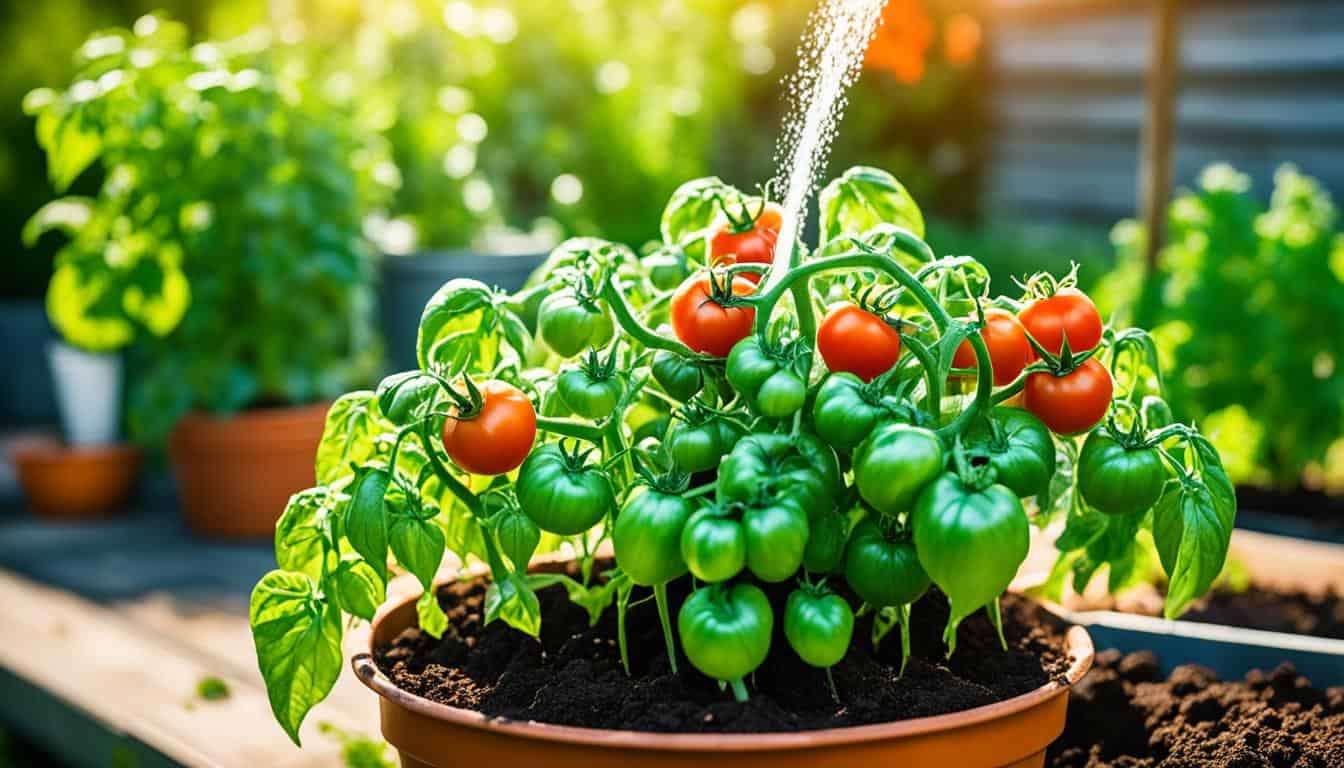
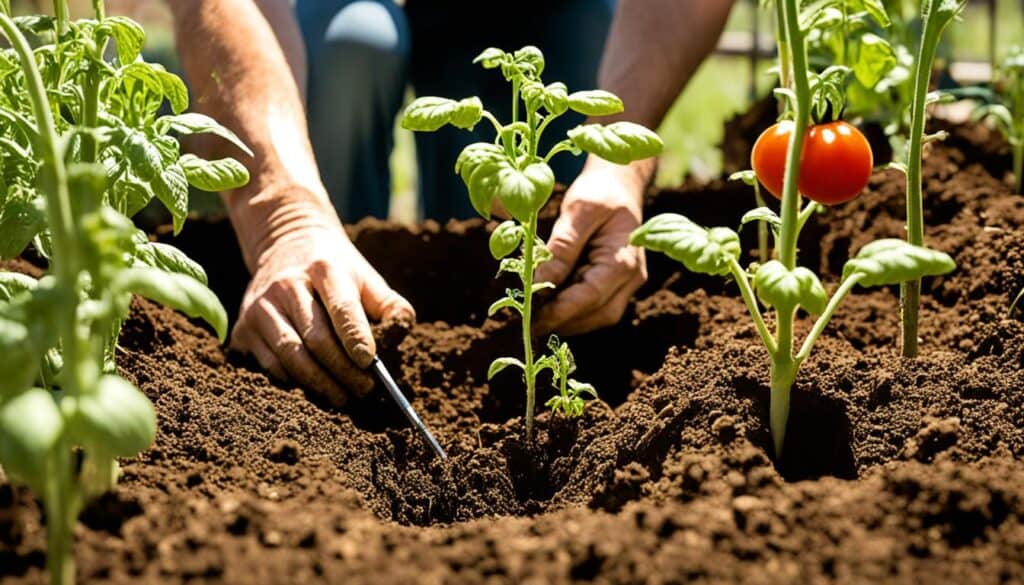
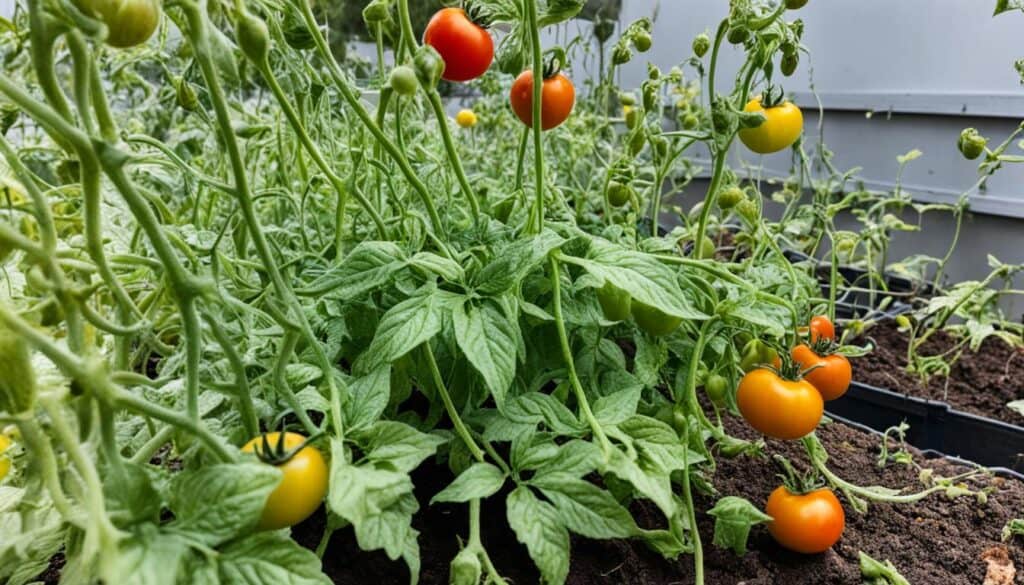
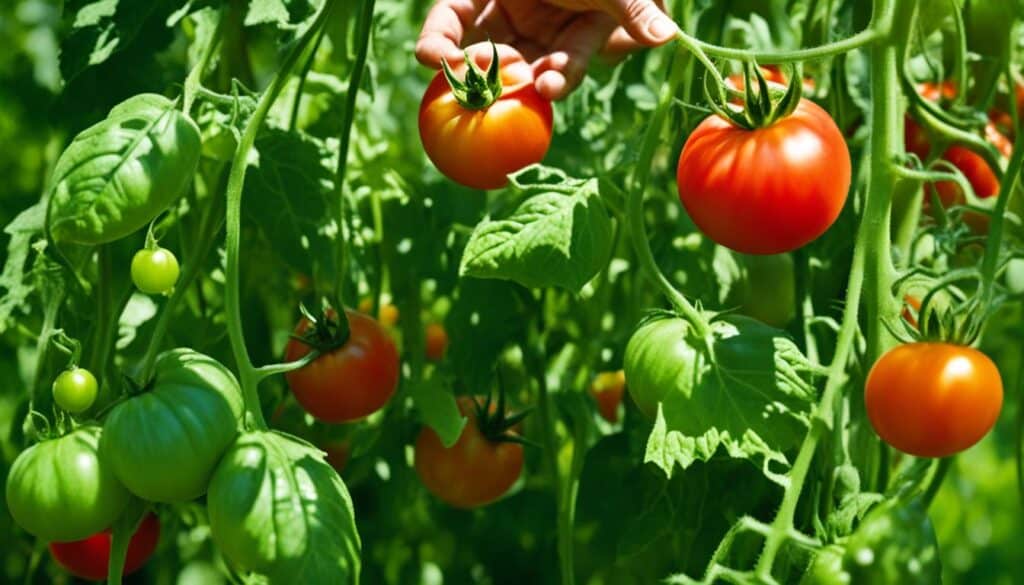

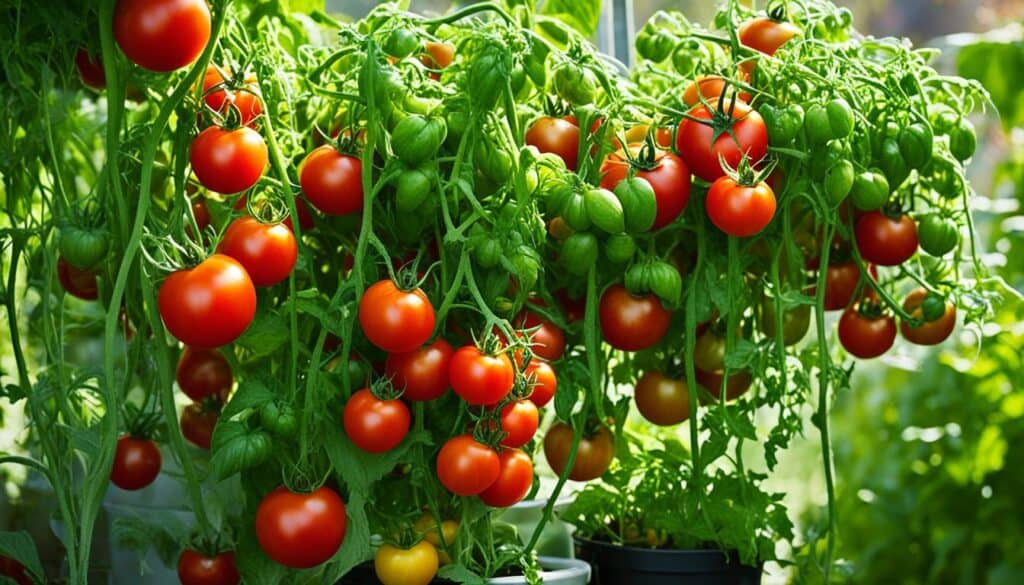
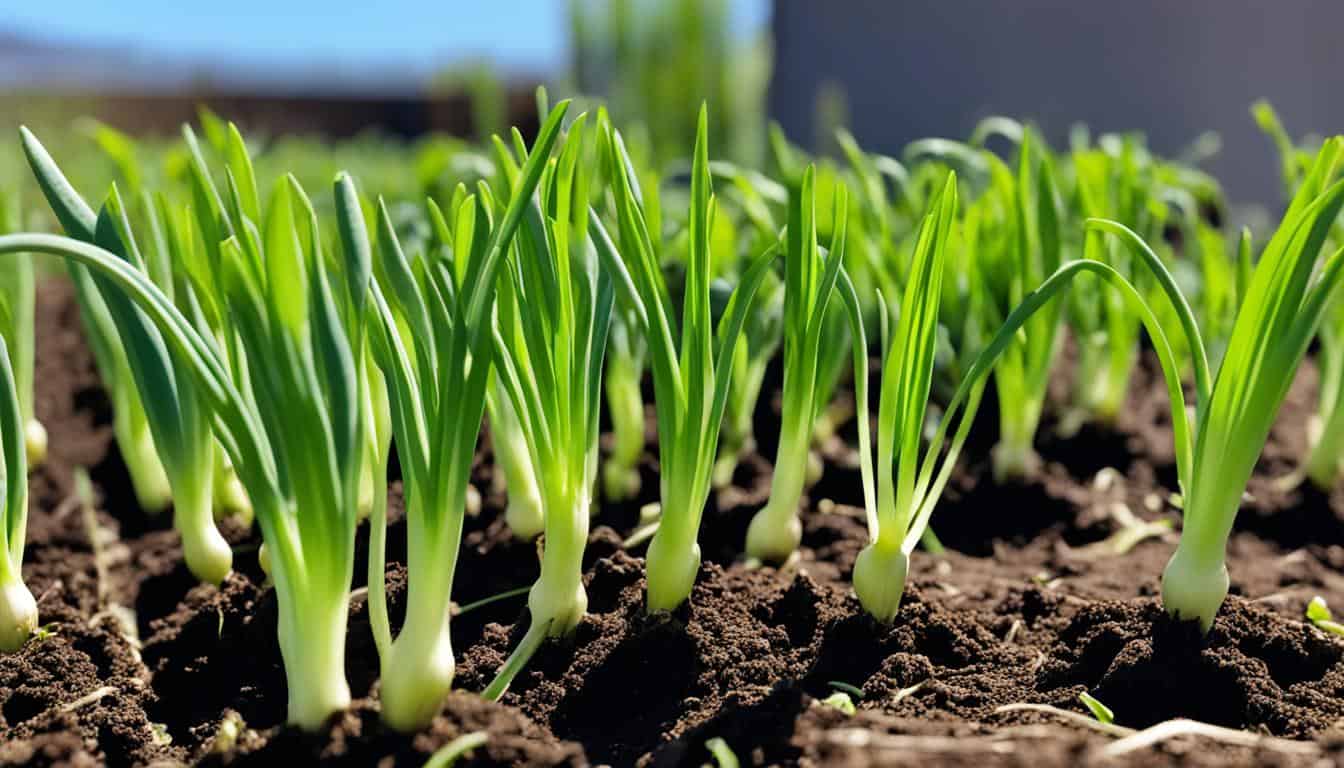

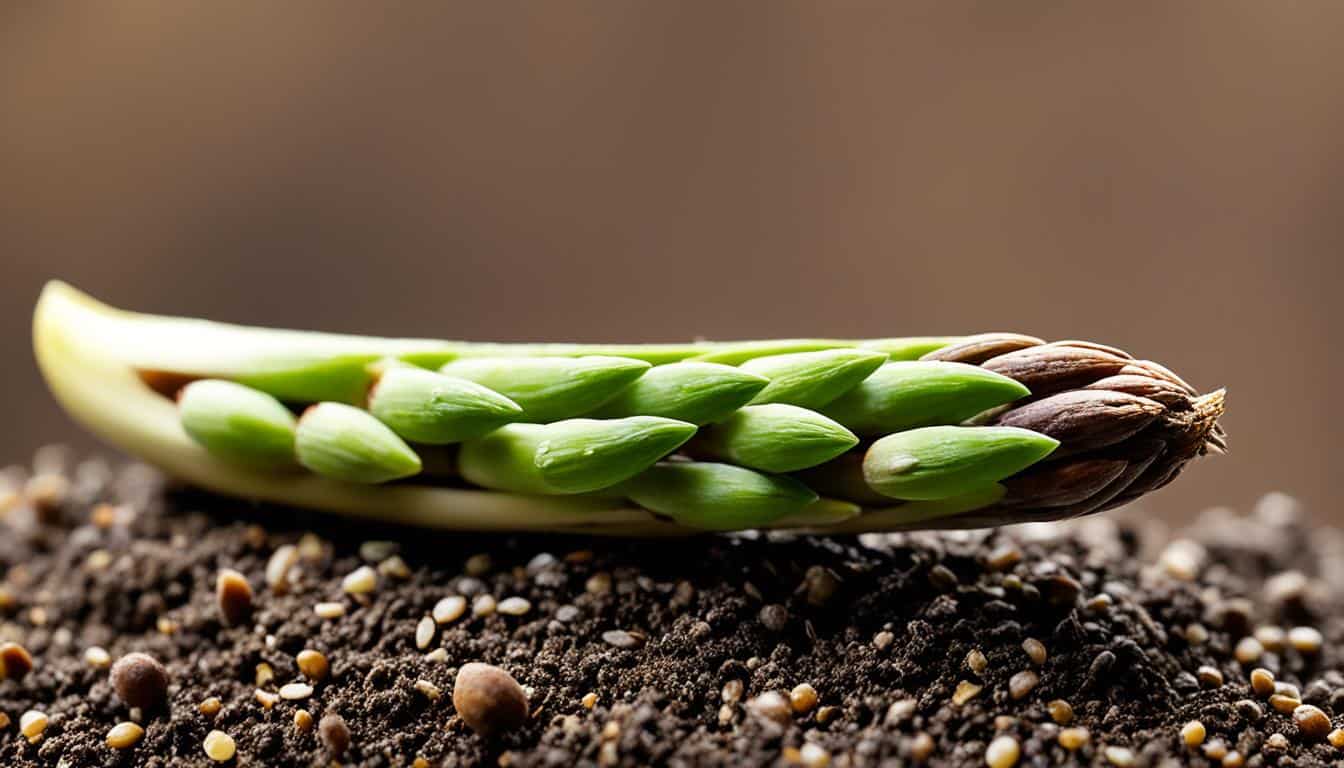
Leave a Reply